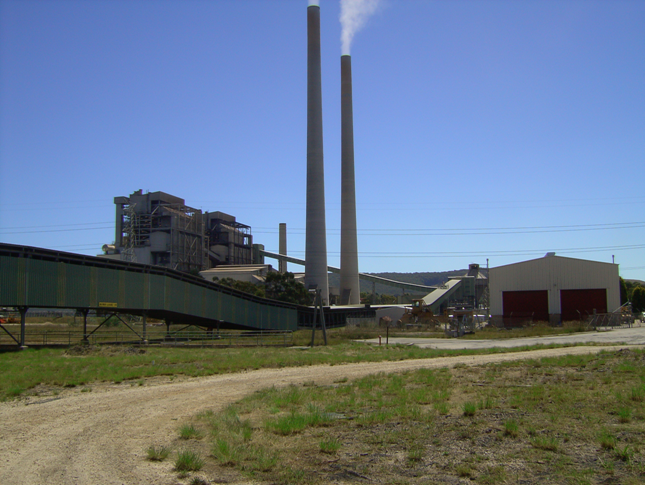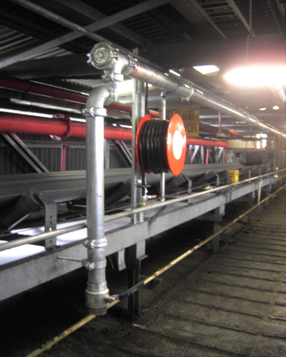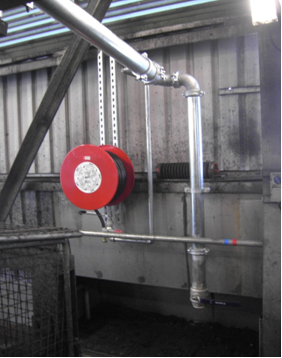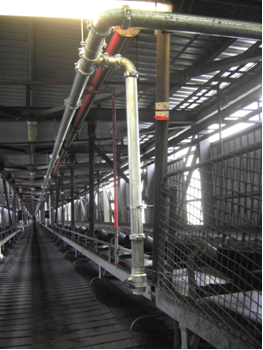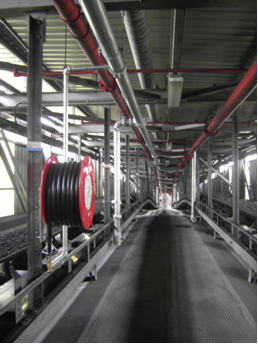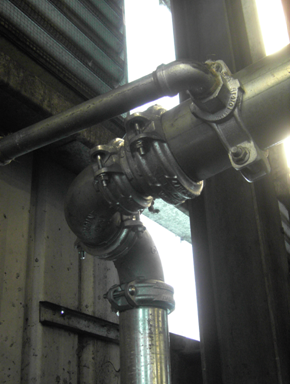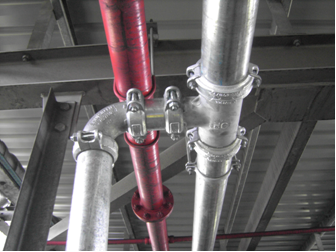Wallerawang Power Station – Conveyor Coal Wash Down Pipework Installation
How many times have you ever walked onto a project, looked at something and said to yourself that there must have been a better way of doing that or I would have done this, well on this project Ryan Wilks got that opportunity. Working hand in hand with our client Delta Electricity Ryan Wilks was able to provide a cheaper and safer alternate design proposal for the recently completed coal wash-down pipework install at the Wallerawang Power Station.
Delta Electricity currently used a hydrant hose reel type pipe work system to daily wash down the coal supply system. To reduce costs associated with this water cleaning Delta proposed to install an alternate, more cost effective coal wash down pipe work system using the local river supply. In addition it was proposed that this same pipe system could, in the future be also used as a vacuum pipe system. The project brief involved the supply of labour and expertise to develop the initial Delta concept design (sketch) for the new wash-down system into a fully commissioned and operational system incorporating the installation of free issued pipe work and fittings (threaded black steel pipe work, hose reels, valves unions and fittings) supplied by Delta Electricity to cover the approx 750 m length of the Conveyors 1, 2 & 3 and the transfer towers.
PROJECT HIGHLIGHTS
Following an inspection on site Ryan Wilks observed a number of significant design and OHS issues that would need to be resolved before any works could start on site. In addition to obvious issues such as working within an operational power station and the strict OHS & E policy’s and procedures in place some of the specific factors that we had to consider in our design development were;
- Working around and above operating conveyors
- The coal, and more importantly coal dust
- The length of, and accessibility to each conveyor section, (overall length of approx 750 m)
- The slope (rise) of each conveyor, slopes up to 1:4 in Conveyors 2 & 3 (overall vertical rise approx 80m)
- The installation of threaded pipe & fitting
- Thermal Pipe Expansion (and contraction) of the pipe work due to temperature variants
- Thermal System (Water) Expansion due to temperature variants
- ERW (black steel) Pipe work
- Sealing of threaded pipe Joints, and or disconnection of “lock-tite” sealed joints for maintenance.
- Screwed connections, a major safety concern regarding the installation
- Use as a Vacuum system
In consideration of the above risks Ryan Wilks submitted two tenders for this project, one a complying bid based on the use of the existing free issue fitting and a second tender based on an alternate design based on the use of rolled groove or Victaulic galvanized pipe work and fittings. Our alternate design proposal (our engineered solution) generated a lot of discussions with Delta Electricity and proved to be the winning edge in securing this project for Ryan Wilks. By using the rolled groove Victaulic pipe work system Ryan Wilks were able to:
- Overcome a number of installation and design concerns noted above
- Reduce installation time. The victualic joints are quicker and easier to install as each joint required only 2 nuts to be tightened up on the coupling joint, thus eliminating the use of large stillsons and risks associated with tightening (screwed) joints adjacent to the operating conveyors.
- Reduce OHS risks associated with the works
- Reduce potential leaks associated with threaded connections
- Allows any pipe section to be easily removed, replaced for serviceability
- Victaulic Flushseal gaskets are rated to 99.9% vacuum
- Use of galvanized pipe and fittings, negates painting and minimizes (eliminate) rust problems as opposed to use black steel pipe
- Re-use existing pre-purchased (free issue) valves, hose reels and pump
- & most importantly provided a costs savings to Delta Electricity
The rolled groove Victaulic joints provided the airtight seal required, allowed easy installation, and more importantly easy removal if required for individual pipe sections. It proved a win win scenario for both Delta Electricity and Ryan Wilks.
So what did we actually do on site. Water was taken from the existing creek supply and run 200m in plastic pipe to the new 200,000 litre washdown storage tank installed by Delta. From the tank the water is then pumped to the new main washdown pipe that runs the full length of the conveyors. The pipe runs from the bottom at the start of Conveyor 1 up to the top located at the end of Conveyor 3, a total length of in excess of 750 m and rises vertically 80 m. Along the main pipe run a total of 21 hose reels and 32 vacuum ports have been installed. To minimise the likelihood of pipework connections becoming blocked when the system is used in vacuum mode each connection was made into the side of the main pipe. In addition isolation valves were fitted to enable each conveyor section of to be isolated for use in vacuum system, or for maintenance purposes. Nothing on site was done small. The new pump required a new supply cable to be run from the main switchboard then along Conveyor 1, under an access road to the pump, a total length of 300 metres.
The project was a success for both Ryan Wilks and Delta Electricity and was delivered on time and under budget.

